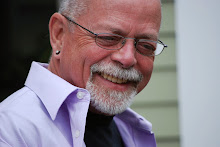Tuesday, December 24, 2013
The gay protest novel (1)
First New Mexico last Thursday and Utah Friday, making eighteen. Life is good right now for LGBT people, but I am reminded of the long years during which we experienced no victories. I remember what those days were like, and the people who didn’t make it to see these current victories, and I take a moment to honor them.
I’ve been reading Middlebrow Queer: Christopher Isherwood in America, by Jaime Harker, the University of Minnesota Press, 2013. I’ve been interested in Isherwood since I was in graduate school in the sixties. Isherwood wrote Goodbye to Berlin, The Berlin Stories, the play and musical made from them, I am a Camera and Caberet with the stories of Sally Bowles and Christopher in Berlin just before Hitler came to power, and also A Single Man, which I read in 1964 and then rediscovered in 2011, and many other novels. I’ve written about him here and here.
Jaime Harker says that during the Cold War—the period 1945 to 1989—ideas of gender construction and a paranoid defense of heterosexuality got mixed up with national policy and with the struggle against the Soviets. She says this:
During the 1940s and 1950s, Cold War intellectuals sought to establish the United States culturally as well as politically (and many did so with covert CIA support for key literary journals). The discipline of American studies—established in books by Leo Marx, F. O. Matthiessen, Richard Chase, and Leslie Fiedler—sought to establish a mythic American spirit; critics in the Partison Review contrasted the freedom of highbrow aesthetics with the niggardly realism of totalitarian regimes. These cultural interventions were marked by an aggressive masculinity, any deviance was denounced as aesthetically compromised and un-American. Literary criticism implicitly enforced conservative gender roles and betrayed anxiety about inordinate cultural influence of women and gay men in the United States, an anxiety alleviated through prescriptive and narrow literary norms. (p. 5)
A paragraph later, Harker says, “Michael Sherry’s Gay Artists in Modern American Culture points out that gay visibility was high in the late forties and early fifties: critics warned of a nefarious lavender menace undermining the masculinity and virility of American culture.” (pp. 5-6) The ‘masculinity and virility’ of American culture were assumed to be critical to fighting the war against totalitarian regimes. Consequently, Harker says, gay novels represented a corrupting force in American culture, and we were subjected to constantly repeated charges leveled against gay men by Senator McCarthy, by many politicians, and by the editor of The State, the daily paper I read as a boy in Columbia, South Carolina. There were two stigmas attached to gay men in 1950. One was this charge of corrupting the culture, and the other was the charge leveled against homosexuals by the American Psychiatric Association, that we were “sick.” Harker points out that “Cold War intellectuals lumped together and pathologized all novels that touched on gay themes” (p. 14).
To “pathologize" all novels with a gay theme means that it was going to be difficult to justify writing a novel about such a theme. Critics could say that no novel on such a subject can be a good novel. It may be that this is the source of the critical condemnation of gay political novels, that they are propaganda for being a corrupting force in the culture..
Christopher Isherwood sought to establish himself as an American writer during this period, a difficult attempt, given that Isherwood was already known as a gay man from his earlier work before he came to America. Isherwood, however, achieved the impossible and wrote major gay novels during this period all of which were attacked for being a corrupting influence on the culture. Harker quotes Isherwood himself in his own defense: “‘There are certain subjects—including Jewish, Negro and homosexual questions—which involve social and political issues. There are laws which could be changed. There are public prejudices which could be removed. Anything an author writes on these subjects is bound, therefore, to have certain propaganda value, whether he likes it or not.’ So despite the considerable differences in style and content, I believe it makes sense to talk about this group of gay novels in the late forties and early fifties as the gay protest novel.”
To anyone trying to determine his own motivations for his actions during that period—I’ve done this myself—it is a relief to be reminded that the writers I was reading, these Cold War intellectuals, were feeding me bitter bigotry, and I thought they were wise. And, considering the actions in the last week in New Mexico and Utah, I find that my joy is easily restrained when I calculate that it has taken some sixty-three years for this progress to be effectuated. Observe the damage these “Cold War intellectuals” did in the late forties and fifties: a generation or two of gay people savaged by people they thought they could trust, a generation of gay writers whose works were savaged, but most of all, a critical principle repeated so widely that it became everywhere accepted, that gay novels on serious political subjects can be no more than mere propaganda and not in themselves capable of being interesting and compelling literature. We were told, gay art cannot be high art. That’s a crime, to have told us that. We’ll never know what literature has been lost to us in the last sixty years because of these “Cold War intellectuals.”

0 comments:
Post a Comment